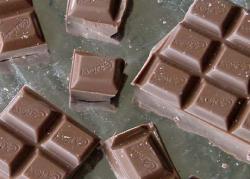Breaking up can be sweet solution
Breaking up can be sweet...

I can't wait for Easter to get here, so I have bought myself a block of chocolate to tide me over. It is a normal rectangular-shaped block with 5 rows, and 4 pieces of chocolate to a row, making 20 pieces of chocolate ready for the eating. I want to eat all of it right now, but I want to savour each piece.
What is the least number of clean snaps necessary to break the block of chocolate into the 20 individual pieces?
What about for a block with n rows of m pieces?
The solution
The solution to this puzzle is really pretty simple - but, as usual with maths, only if you think about it the right way!
Each snap creates exactly one extra piece, therefore to break a bar with K squares of chocolate into all its constituent pieces will require K-1 snaps. So if the block has n rows of m pieces, it will take nm-1 breaks.
And that's all there is to it!
Back to main puzzle page
Anonymous
Why is it not 17? If you half each time. Ie. first cut creates 2x4 and 3x4. second and third creates 2 blocks of 2x2 and 2 blocks of 2x3. The first 2 2x2 require 3cuts each the second 2x3 require 4 cuts each. 3+3+3+4+4=17
Anonymous
Doesn't each 2x3 require 5 cuts?